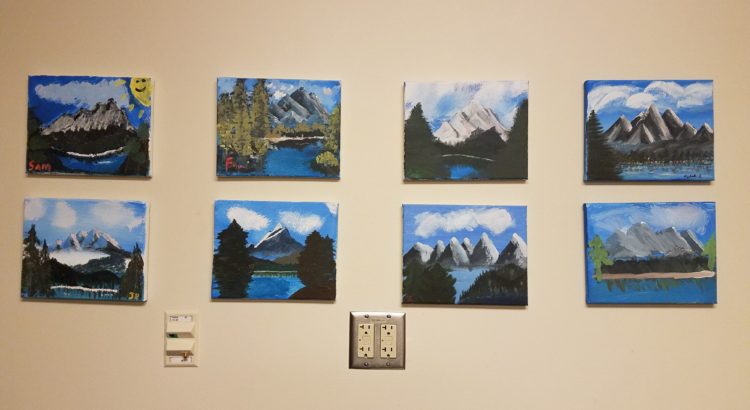Now that it’s four weeks into the new school year, I can’t help but reflect on how my experiences over the summer have shaped the current year. During break, I had the opportunity to stay in Ann Arbor, where I worked and took two classes. One of my jobs was through UM Housing, which provided room and board. My other job was a position as an RC peer advisor, which entailed helping incoming students in LSA’s Residential College program pick their classes during orientation.
 During my free time, there were a plethora of wonderful things to do. Campus was breathtakingly beautiful throughout the spring and summer, with flowers in full bloom and an overall more relaxed environment. I went to the Ann Arbor Farmers Market/food truck rallies, enjoyed nights at the Ann Arbor Summer Festival’s Top of the Park series, and made frequent trips to the Ann Arbor District Downtown Library (while participating in their Summer Game program, where you can explore A2 places, log your reading, etc. for real-life prizes). Additionally, I witnessed the gradual bloom of peonies at the Nichols Arboretum, experienced a green tea tea tasting at TeaHaus, and went down a water slide at the Fuller Park outdoor pool.
During my free time, there were a plethora of wonderful things to do. Campus was breathtakingly beautiful throughout the spring and summer, with flowers in full bloom and an overall more relaxed environment. I went to the Ann Arbor Farmers Market/food truck rallies, enjoyed nights at the Ann Arbor Summer Festival’s Top of the Park series, and made frequent trips to the Ann Arbor District Downtown Library (while participating in their Summer Game program, where you can explore A2 places, log your reading, etc. for real-life prizes). Additionally, I witnessed the gradual bloom of peonies at the Nichols Arboretum, experienced a green tea tea tasting at TeaHaus, and went down a water slide at the Fuller Park outdoor pool. 
Now for the artsy part of this blog post. When looking online for things to do in Ann Arbor, there was one thing I consistently came across: the Ann Arbor Art Fair. Nearby friends and family detailed it as something I had to check out. In the days leading up to it, I was prepared to feel squished among the enormous crowds that flock to downtown Ann Arbor for the event. What I didn’t anticipate, however, was the stormy weather. There were moments when artists struggled to hold down tents as rain and gusty winds came out of nowhere. It was heartbreaking to see the artists’ work knocked over and people scrambling for cover; I can only imagine the damage done to both attendance and physical pieces of art due to the inclement weather.
 Nonetheless, it was very cool to see four independent fairs – each featuring incredible art – simultaneously occur to form one huge event. I was thoroughly impressed by the quality, beauty, and diversity of all of the art being presented. Live music, interesting food, and good friends contributed to a positive experience.
Nonetheless, it was very cool to see four independent fairs – each featuring incredible art – simultaneously occur to form one huge event. I was thoroughly impressed by the quality, beauty, and diversity of all of the art being presented. Live music, interesting food, and good friends contributed to a positive experience.
Overall, summer was the perfect opportunity to explore some of the many amazing activities, shops, and history that Ann Arbor has to offer. The knowledge gained regarding Ann Arbor’s restaurants, bus system, and more have positively translated into feeling more comfortable and at home throughout the current school year.







